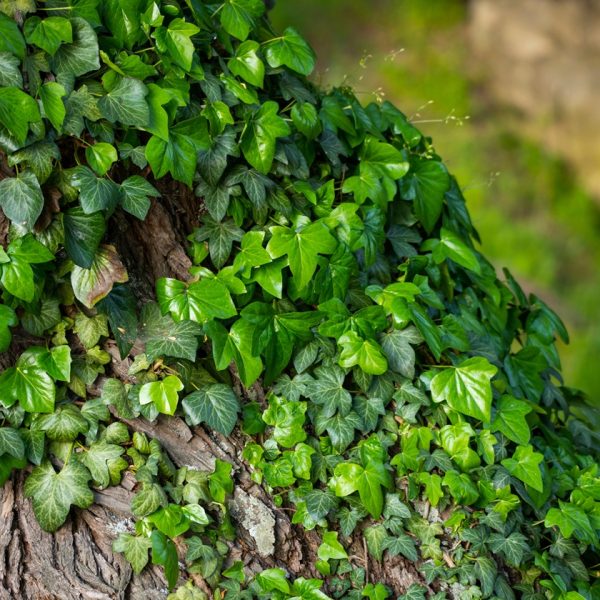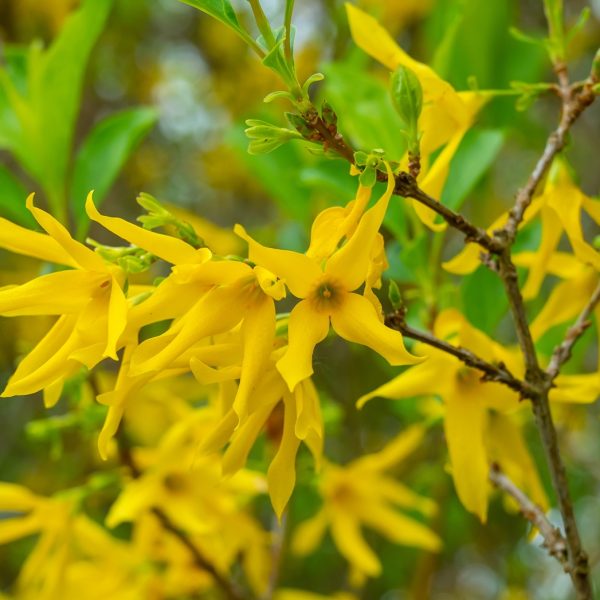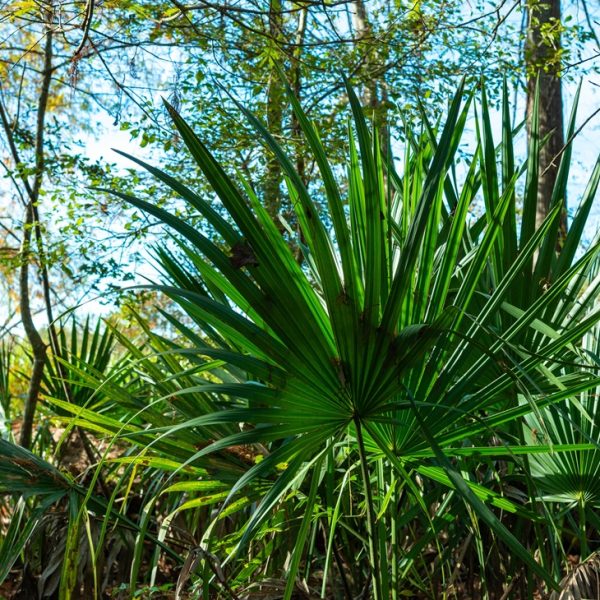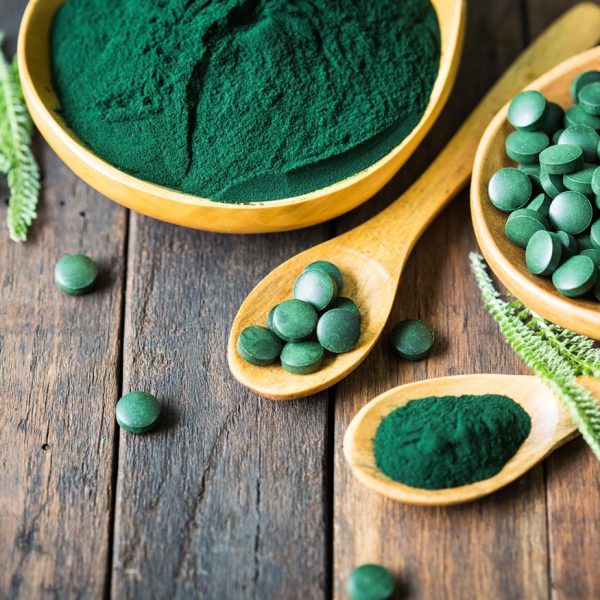-
How does it feel?
-
What can I use it for?
Irish moss supports our cardiovascular health, digestive health as well as our respiratory health. It is a bulking laxative and prebiotic but can also be used as a cough remedy, immune support and nutraceutical.
-
Into the heart of irish moss
The well-balanced mineral content of Irish moss, potassium, magnesium, iodine, calcium, iron, zinc, sodium and omega 3 essential fatty acids are shown to improve hypertension and cholesterol balance (1).
Irish Moss also contains vitamin A, B (B1, B2, B9, B12), C, D, E, K. Protein levels are comparable with foods such as pulses, nuts and seeds (2).
Vitamin B12 is controversial in that much research has previously shown the B12 to be an analogue and not bioavailable to humans. However, latest research seems to show some B12 is present in useable form, in some seaweeds, especially the red ones such as Irish moss and dulse (3).
-
Traditional uses
Traditional use in Western herbal medicine shows Irish moss used as a convalescence food in a broth, (4) in contemporary nutrition this might be combined well in a mushroom and miso broth for an immune supportive nutrient rich recovery food, perhaps an alternative to bone broth for vegetarians and vegans.
Irish moss was also traditionally used in cough remedies for its soothing, demulcent and cooling benefits. It was often boiled with liquorice, ginger and aniseed. (5)
-
Traditional actions
Herbal actions describe therapeutic changes that occur in the body in response to taking a herb. These actions are used to express how a herb physiologically influences cells, tissues, organs or systems. Clinical observations are traditionally what have defined these actions: an increase in urine output, diuretic; improved wound healing, vulnerary; or a reduction in fever, antipyretic. These descriptors too have become a means to group herbs by their effects on the body — herbs with a nervine action have become the nervines, herbs with a bitter action are the bitters. Recognising herbs as members of these groups provides a preliminary familiarity with their mechanisms from which to then develop an understanding of their affinities and nuance and discern their clinical significance.
-
Traditional energetic actions
Herbal energetics are the descriptions Herbalists have given to plants, mushrooms, lichens, foods, and some minerals based on the direct experience of how they taste, feel, and work in the body. All traditional health systems use these principles to explain how the environment we live in and absorb, impacts our health. Find out more about traditional energetic actions in our article “An introduction to herbal energetics“.
-
What practitioners say
A useful addition to the modern herbal dispensary for it’s wide ranging, gentle, but deep supportive actions, used internally and topically.
-
Research

Dried Irish moss (Chondrus crispus) A lot of the research and scientific evidence has been carried out on extracts of Irish moss constituents rather than the whole seaweed. However, traditional and empirical evidence should not be ignored as a useful knowledge source.
There is evidence for Irish moss having antibiotic activity against Staphylococcus aureus (topical on skin), Escherichia coli in the gut and urinary tract, Streptococcus pyogenes in tonsilitis and ‘strep throat’ (8,9,10,11,12)
Anti-microbial activity has been shown against Enterococcus faecalis at 100% effective in vitro by methanolic Chondrus crispus extracts (13)
Enterococcus faecalis is a commensal bacteria, meaning it exists in small quantities in the human body without causing a problem unless it is allowed to proliferate, such as with immunocompromised people. This is most common in hospital acquired infections such as in wounds, gastrointestinal infections, urinary tract infections and even endocarditis especially in the elderly. There is some risk of antibiotic resistance.
The bacterial formation of biofilms, a sticky surface substance that encourages other bacteria to grow, for instance Enterococcus faecalis with E. coli, are part of the mechanism in antibiotic resistance. Chondrus crispus has been shown in bacterial research to inhibit biofilm production.
Blood cholesterol and lipid-lowering effects of Carrageenan on human volunteers (14)
This randomised crossover trial involving 20 human volunteers showed a substantial reduction in blood lipids and cholesterol levels after consumption of carrageen over an eight-week period.
In vitro research on Chondrus crispus extracts show dose dependant anti-oxidant activity (15)
Studies show seaweed constituents such as phytosterols and carotenoids are able to cross the blood brain barrier and in the blood circulation promote neuroprotective benefits, antioxidant activity, and have a detoxifying effect by way of enhancing phagocytic clearance of neurotoxic peptides. (15, 16)
Prebiotics from seaweeds: An ocean of opportunity? (17)
Chondrus crispus is high in prebiotic polysaccharides which provide our health promoting gut flora with their preferred food. The gut flora we feed are the ones that proliferate. These promote good digestion and bowel regularity, and production of short chain fatty acids. This enhances the integrity of the protective mucous membrane layer of the gut and improves immune function. (17,18,19)
Antiproliferative and antioxidant activities and mycosporine-like amino acid profiles of wild-harvested and cultivated edible Canadian marine red macroalgae (20)
In vitro research on HeLa cervical cancer cells and U-937 lymphoma cells comparing cultivated and wild harvested Chondrus crispus shows the cultivated to promote apoptosis (programmed cell death) of the cancer cells more strongly. (21) In vitro research on human cancer cell lines has also shown effective cytotoxicity to tumour cells by Chondrus crispus extracts. (21)
A study of methanolic extracts of dried algal powder of C. crispus showed in vitro cytotoxicity against the hepatic tumor cell line (HepG2), breast cancer cells (MCF7), colorectal adenocarcinoma (Caco-2), and adenocarcinoma of human alveolar cells (A549). Among all of them, Chondrus crispus extract was effective against 81.9% of HepG2 and 71.8% of A549 cells (20)
Evaluation of the anticoagulant potential of polysaccharide-rich fractions extracted from macroalgae (22)
This in vitro study on extracts of seaweeds, including Chondrus crispus in comparison with pharmaceutical anticoagulant medications heparin and Lovenox (Enoxaparin sodium) shows anticoagulant activity measured at only five times lower than the medication (22).
-
Did you know?
Irish moss extracts, carrageenan, from the surface of the seaweed are used in the food industry as a thickener, emulsifier and gelling agent in foods such as ice cream, soup and baked goods. (23)
An isolated extract is not the same as using the whole plant. The common name of carrageen sometimes used to describe the whole plant Chondrus crispus, is not the same as the ingredient listed on processed foods carrageenan. There are three types of extracted carrageenan, with the designated E407 additive number. Kappa, iota and lambda carrageenans have slightly different properties, they may create a solid gel, a viscous thickening emulsifying agent, or a clearing agent in beverages such as beer.
The belief is that use of other thickening and gelling agents are safer such as agar agar, which is extracted from other types of red seaweed such as Gracilaria. Gelatin from animal bones, and pectin from fruit such as apple cores and peel. (24,25)
In the 19th century in Ireland, Chondrus crispus was traditionally used for a convalescence food, such as in the pudding called Blancmange, which is a set jelly like milk or cream based dessert, often flavoured with fruit juice. (26)
The Physiomedical Dispensatory of 1869 describes Carrageen being boiled with sweetening and lemon or spices for a demulcent soothing remedy in coughs and colds. (12)
Irish moss with many other seaweeds was a survival food in the Irish Potato Famine. Seaweed as food generally has been turned to in wars and times of crisis throughout history. This led to an association with consumption of seaweed and poverty. Today however, seaweed is enjoying a resurgence of popularity with the growing knowledge of the nutritional and medicinal benefits. (27)
The benefits are not just directly nutritional and medicinal, but indirectly when used as crop soil compost and fertiliser, adding large amounts of well-balanced nitrogen, potassium and phosphorus needed to grow healthy vegetables and fruit, or used as a nutritious farm animal feed supplement.
One notable nutrient is taurine, a semi essential amino acid. The human body can create small amounts of its own taurine, but studies have shown that taurine is used in higher amounts in pregnancy, ill health and the elderly. Vegetarians, and especially vegans are likely to consume very little of this which is usually found in meat, fish and small amounts in dairy produce. Chondrus crispus has high amounts of this nutrient. Taurine itself has been approved to improve outcomes of congestive heart failure in Japan, and a World Health Association study shows improvements in hypertension and hypercholesteremia. (28,29)
Other uses include extracts of alginates in wound dressings, used in WWII by medic Major George Blaine who used them in burn wounds in the Far East.
Alginates are used today in antacid medications, and in commercial wound dressings.
Interestingly, boiling seaweed in clean water for ten minutes reduces the iodine content by 94%, however it also then reduces many of the beneficial nutrients. (30)
Additional information
-
Botanical description
Classed as a red seaweed (Rhodophyta) inhabiting deeper sea water rocky shores.
Reddish purple, sometimes green when exposed to the sun, or iridescent when under water, small and bushy, the fronds grow dichotomously; dividing into two, sometimes several times, from a stalk or stipe and are flat with rounded tips (35).
-
Safety
Some safety concerns have been raised, especially with degraded carrageenans with questions and concerns raised about promotion of digestive system cancers, colitis, gastric and duodenal ulcers, glucose intolerance and immune suppression. Some of this risk is believed to be related to the inflammatory action on the gut mucous membrane layer, damaging the cells and eroding the fatty and mucosal tissues (23).
There is no research on safety in pregnancy and breastfeeding for the use of Chondrus crispus, especially because of the iodine content. Therefore, food quantities only is recommended (31).
-
Interactions
A theoretical interaction between anticoagulant medication and high levels of Chondrus crispus intake is possible (30).
Due to high iodine content of Irish moss, interactions may occur with thyroid medication and amiodarone (which contains 37.3% iodine and may increase iodine levels) (32).
-
Contraindications
Care should be taken in thyroid conditions, refer to a professional, especially if on medication (30,32).
-
Preparations
Chopped or dried and crumbled into soups, stews, curry, Bolognese, casseroles.
Used at 10% medicinally in cough medicines, as an extra source of vitamins and minerals and in the form of tincture to add to creams or gels for a healing antiseptic effect.
-
Dosage
The consumption of 4 g daily of Chondrus crispus is considered within the safety limits of iodine consumption in healthy adults (31).
-
Plant parts used
The whole plant is used with the preference being to cut the seaweed from its stem and holdfast (root) so it may grow again.
-
Constituents
Irish moss contains:
- Macronutrients carbohydrates, protein, lipids (particularly polyunsaturated) (33)
- Minerals: Sodium, phosphorus, calcium, magnesium, iron, zinc, copper, manganese, iodine
- Beta carotene, a-tocopherol and ascorbate, essential amino acids histidine, isoleucine, leucine, lysine, methionine, phenylalanine, threonine, tryptophan, valine and semi essential amino acid taurine, polyphenols and monosaccharides, glucose, galactose, mannose, arabinose, xylose and glucosamine
- Isoflavones: Daidzin, daidzein, genistein, genistin, ononin, sissotrin, formonentin and biochanin (34)

-
Habitat
Rocky sea shores, lower intertidal deeper water and upper subtidal zones. Common throughout UK and Irish coasts and North Atlantic (35).
-
Sustainability
 Although Chondrus crispus is a commonly available seaweed, habitats are changing and seas are warming, meaning conditions are often hostile environments leading to depletion of many seaweeds. If gathering from the sea, care should be taken to leave the holdfast (root) to continue growing, take small amounts and leave plenty behind. Pollution from shipping, leisure activities, farmland run off, road and sewage outlets all have the potential to damage the marine environment. Water quality can be monitored by accessing organisations such as the marine conservation and campaigning charity Safer Rivers and Seas in the UK, and Northern Ireland. (36, 37, 38)
Although Chondrus crispus is a commonly available seaweed, habitats are changing and seas are warming, meaning conditions are often hostile environments leading to depletion of many seaweeds. If gathering from the sea, care should be taken to leave the holdfast (root) to continue growing, take small amounts and leave plenty behind. Pollution from shipping, leisure activities, farmland run off, road and sewage outlets all have the potential to damage the marine environment. Water quality can be monitored by accessing organisations such as the marine conservation and campaigning charity Safer Rivers and Seas in the UK, and Northern Ireland. (36, 37, 38)Habitat loss and over-harvesting from the wild are two of the biggest threats faced by medicinal plant species. There are an increasing number of well-known herbal medicines at risk of extinction. We must, therefore, ensure that we source our medicines with sustainability in mind.
The herb supplement industry is growing at a rapid rate and until recent years a vast majority of medicinal plant produce in global trade was of unknown origin. There are some very real and urgent issues surrounding sustainability in the herb industry. These include environmental factors that affect the medicinal viability of herbs, the safety of the habitats that they are taken from, as well as the welfare of workers in the trade.
The botanical supply chain efforts for improved visibility (transparency and traceability) into verifiably sustainable production sites around the world is now certificated through the emergence of credible international voluntary sustainability standards (VSS).
Read our article on Herbal quality and safety: What to know before you buy and Sustainable sourcing of herbs to learn more about what to look for and questions to ask suppliers about sustainability.
-
Quality control
Herbal medicines are often very safe to take, however, it is important to buy herbal medicines from a reputed supplier. Sometimes herbs bought from unreputable sources are contaminated, adulterated or substituted with incorrect plant matter.
Some important markers for quality to look for would be to look for certified organic labelling, ensuring that the correct scientific/botanical name is used and that suppliers can provide information about the source of ingredients used in the product.
A supplier should be able to tell you where the herbs have come from. There is more space for contamination and adulteration when the supply chain is unknown.
Safety
Pollution of our seas is a growing concern. Harvesting seaweed needs careful checking for when there may have been sewage outflows locally, or farm run off or nearby road pollution after heavy rain. Research into the local area is important to establish safety.
Most contamination of seaweed is on the surface of the plant, and no more than any land grown vegetable or fruit. Studies show that as non-filter feeders, seaweed is not considered high risk for bacterial and viral food borne transmission. (unlike shellfish for instance) Careful washing is sensible. Water purity and safety can be checked by accessing regularly updated websites such as Safer Rivers and Seas (app available) (39,40)
Another method of safe storage is fermentation with something like sauerkraut or kimchi if you prepare your own. Approximately 20% seaweed can be added to a cabbage-based fermentation recipe. The acidic pH of the fermentation process makes it hostile to pathogens. (41)
-
How to grow
Irish moss isn’t a herb that you can grow at home, it is a herb to be foraged from spring to autumn (which is outside of its production period).
-
Recipe
Vegan / vegetarian alternative to bone broth by Dawn Ireland
This recipe is full of the necessary nutrients to heal the gut, promote collagen production, and promote healthy gut flora proliferation.
Serves two
Ingredients
- 2 teaspoons of miso paste
- 1 tablespoon balsamic vinegar
- 1 dessert spoon of tahini paste (creamed sesame seed)
- 2 pints of water
- 1 tablespoon of dry or fresh chopped Irish moss seaweed
- 10 chopped mushrooms (any sort you prefer)
- 2 tablespoons of wholegrain buckwheat (not related to wheat, but is in the rhubarb family and is high in protein) or brown rice (shortgrain is nice and nutty) or quinoa or lentils (pre-soaked and cooked) or pearl barley grain
- 1 chopped red onion
- 3 cloves chopped and crushed garlic
- A handful of chopped cabbage or broccoli
- Optional herbs: Choose preferred and add to taste at end of cooking just before serving — coriander leaf or seed, parsley, pepper, turmeric, paprika, dill, horseradish, mustard, chilli
- Optional to thicken just before end of cooking: Two teaspoons of cornflour or one teaspoon of arrowroot powder in a little cold water to blend.
Method
- Pre-soak buckwheat or rice or lentils overnight, (reduces phytates) rinse in clean water then cook in water until soft, or use a tin of lentils and set aside.
- In a pan place onion, garlic, balsamic vinegar, half of your water, and miso paste. Bring to a gentle simmer for five minutes
- Add tahini, cabbage or broccoli, and bring to a simmer.
- Add grain or lentils and mushrooms.
- Add rest of ingredients and simmer for five minutes.
- Prepare and add thickener if using, cook to activate thickening for two minutes. Serve.
Can be varied with additions of different vegetables such as beetroot, tomatoes, carrots, etc. The aim being to keep the seaweed, mushrooms, miso, and balsamic vinegar, with a variety of rainbow-coloured vegetables added to the soup.
Homemade sauerkraut is also a nice addition included just before serving.
-
References
- Lomartire, Silvia, João Carlos Marques, and Ana M. M. Gonçalves. “An Overview to the Health Benefits of Seaweeds Consumption.” Marine Drugs 19, no. 6 (June 15, 2021): 341. https://doi.org/10.3390/md19060341.
- Murai, Utako, Kazumasa Yamagishi, Rie Kishida, and Hiroyasu Iso. “Impact of Seaweed Intake on Health.” European Journal of Clinical Nutrition 75, no. 6 (June 1, 2021): 877–89. https://doi.org/10.1038/s41430-020-00739-8.
- Watanabe, Fumio, Shigeo Takenaka, Hiromi Kittaka-Katsura, Shuhei Ebara, and Emi Miyamoto. “Characterization and Bioavailability of Vitamin B12-Compounds from Edible Algae.” Journal of Nutritional Science and Vitaminology 48, no. 5 (October 2002): 325–31. https://doi.org/10.3177/jnsv.48.325.
- Mišurcová, Ladislava, Ludmila Machů, and Jana Orsavová. “Seaweed Minerals as Nutraceuticals.” Advances in Food and Nutrition Research 64 (January 1, 2011): 371–90. https://doi.org/10.1016/B978-0-12-387669-0.00029-6.
- Cotas, João, Adriana Leandro, Diana Pacheco, Ana M. M. Gonçalves, and Leonel Pereira. “A Comprehensive Review of the Nutraceutical and Therapeutic Applications of Red Seaweeds (Rhodophyta).” Life 10, no. 3 (February 26, 2020): 19. https://doi.org/10.3390/life10030019.
- Robertson, Ruairi C., Freddy Guihéneuf, Bojlul Bahar, Matthias Schmid, Dagmar B. Stengel, Gerald F. Fitzgerald, R. Paul Ross, and Catherine Stanton. “The Anti-Inflammatory Effect of Algae-Derived Lipid Extracts on Lipopolysaccharide (LPS)-Stimulated Human THP-1 Macrophages.” Marine Drugs 13, no. 8 (August 2015): 5402–24. https://doi.org/10.3390/md13085402.
- Banskota, Arjun, Roumiana Stefanova, Sandra Sperker, Santosh Lall, James Craigie, and Jeff Hafting. “Lipids Isolated from the Cultivated Red Alga Chondrus Crispus Inhibit Nitric Oxide Production.” Journal of Applied Phycology 26 (October 16, 2013). https://doi.org/10.1007/s10811-013-0174-5.
- Hornsey, I.S., and D. Hide. “The Production of Antimicrobial Compounds by British Marine Algae I. Antibiotic-Producing Marine Algae.” British Phycological Journal 9, no. 4 (December 31, 1974): 353– 61. https://doi.org/10.1080/00071617400650421.
- Park, Seon-Joo, Anshul Sharma, and Hae-Jeung Lee. “An Update on the Chemical Constituents and Biological Properties of Selected Species of an Underpinned Genus of Red Algae: Chondrus.” Marine Drugs 22, no. 1 (January 17, 2024): 47. https://doi.org/10.3390/md22010047.
- Habibie, Ahmad, Tri Raharjo, Respati Swasono, and Endah Retnaningrum. “Antibacterial Activity of Active Peptide from Marine Macroalgae Chondrus Crispus Protein Hydrolysate against Staphylococcus Aureus.” Pharmacia 70 (October 5, 2023): 983–92. https://doi.org/10.3897/pharmacia.70.e112215.
- Kulshreshtha, Garima, Anne-Sophie Burlot, Christel Marty, Alan Critchley, Jeff Hafting, Gilles Bedoux, Nathalie Bourgougnon, and Balakrishnan Prithiviraj. “Enzyme-Assisted Extraction of Bioactive Material from Chondrus Crispus and Codium Fragile and Its Effect on Herpes Simplex Virus (HSV-1).” Marine Drugs 13, no. 1 (January 2015): 558–80. https://doi.org/10.3390/md13010558.
- “Chondrus Crispus. Carrageen, Irish Moss. | Henriette’s Herbal Homepage.” Accessed July 13, 2024. https://www.henriettes-herb.com/eclectic/cook/CHONDRUS_CRISPUS.htm.
- Said, Mina S., Ekta Tirthani, and Emil Lesho. “Enterococcus Infections.” In StatPearls. Treasure Island (FL): StatPearls Publishing, 2024. http://www.ncbi.nlm.nih.gov/books/NBK567759/.
- Panlasigui, Leonora N., Olivia Q. Baello, Jeniffer M. Dimatangal, and Benelyn D. Dumelod. “Blood Cholesterol and Lipid-Lowering Effects of Carrageenan on Human Volunteers.” Asia Pacific Journal of Clinical Nutrition 12, no. 2 (2003): 209–14.
- Schepers, Melissa, Nikita Martens, Assia Tiane, Kenneth Vanbrabant, Hong-Bing Liu, Dieter Lütjohann, Monique Mulder, and Tim Vanmierlo. “Edible Seaweed-Derived Constituents: An Undisclosed Source of Neuroprotective Compounds.” Neural Regeneration Research 15, no. 5 (May 2020): 790–95. https://doi.org/10.4103/1673-5374.268894.
- Alkhalaf, Maha I. “Chemical Composition, Antioxidant, Anti-Inflammatory and Cytotoxic Effects of Chondrus Crispus Species of Red Algae Collected from the Red Sea along the Shores of Jeddah City.” Journal of King Saud University – Science 33, no. 1 (January 1, 2021): 101210. https://doi.org/10.1016/J.JKSUS.2020.10.007.
- Cherry, Paul, Supriya Yadav, Conall R. Strain, Philip J. Allsopp, Emeir M. McSorley, R. Paul Ross, and Catherine Stanton. “Prebiotics from Seaweeds: An Ocean of Opportunity?” Marine Drugs 17, no. 6 (June 1, 2019): 327 https://doi.org/10.3390/md17060327.
- Gibson, Glenn R., and Marcel B. Roberfroid. “Dietary Modulation of the Human Colonic Microbiota: Introducing the Concept of Prebiotics.” The Journal of Nutrition 125, no. 6 (June 1, 1995): 1401–12. https://doi.org/10.1093/jn/125.6.1401.
- Blaak, E. E., E. E. Canfora, S. Theis, G. Frost, A. K. Groen, G. Mithieux, A. Nauta, et al. “Short Chain Fatty Acids in Human Gut and Metabolic Health.” Beneficial Microbes 11, no. 5 (September 1, 2020): 411–55. https://doi.org/10.3920/BM2020.0057.
- Athukorala, Yasantha, Susan Trang, Carmen Kwok, and Yvonne V. Yuan. “Antiproliferative and Antioxidant Activities and Mycosporine-Like Amino Acid Profiles of Wild-Harvested and Cultivated Edible Canadian Marine Red Macroalgae.” Molecules (Basel, Switzerland) 21, no. 1 E119. https://doi.org/10.3390/molecules21010119.
- Lordan, Sinéad, R. Paul Ross, and Catherine Stanton. “Marine Bioactives as Functional Food Ingredients: Potential to Reduce the Incidence of Chronic Diseases.” Marine Drugs 9, no. 6 (June 14, 2011): 1056–1100. https://doi.org/10.3390/md9061056.
- Adrien, Amandine, Delphine Dufour, Stanislas Baudouin, Thierry Maugard, and Nicolas Bridiau. “Evaluation of the Anticoagulant Potential of Polysaccharide-Rich Fractions Extracted from Macroalgae.” Natural Product Research 31, no. 18 (September 17, 2017): 2126–36. https://doi.org/10.1080/14786419.2017.1278595.
- Anggraini, J, and D Lo. “Health Impact of Carrageenan and Its Application in Food Industry: A Review.” IOP Conference Series: Earth and Environmental Science 1169, no. 1 (April 1, 2023): 012098. https://doi.org/10.1088/1755-1315/1169/1/012098. “
- Agar | Description, Uses, & Properties | Britannica,” June 17, 2024. https://www.britannica.com/topic/agar-seaweed-product.
- Udo, Toshifumi, Gopinath Mummaleti, Anand Mohan, Rakesh K. Singh, and Fanbin Kong. “Current and Emerging Applications of Carrageenan in the Food Industry.” Food Research International 173 (November 1, 2023): 113369. https://doi.org/10.1016/j.foodres.2023.113369.
- Spoon, Randy. “Irish Moss: The History of Carrageenan’s Roots.” Food Ingredient Facts (blog), June 7, 2018. https://www.foodingredientfacts.org/irish-moss-the-history-of-carrageenans-roots/.
- Mouritsen, Ole G., Prannie Rhatigan, M. Lynn Cornish, Alan T. Critchley, and José Lucas Pérez-Lloréns. “Saved by Seaweeds: Phyconomic Contributions in Times of Crises.” Journal of Applied Phycology 33, no. 1 (2021): 443–58. https://doi.org/10.1007/s10811-020-02256-4.
- Schaffer, Stephen, and Ha Won Kim. “Effects and Mechanisms of Taurine as a Therapeutic Agent.” Biomolecules & Therapeutics 26, no. 3 (May 2018): 225–41. https://doi.org/10.4062/biomolther.2017.251.
- Lopez, Michael J., and Shamim S. Mohiuddin. “Biochemistry, Essential Amino Acids.” In StatPearls. Treasure Island (FL): StatPearls Publishing, 2024. http://www.ncbi.nlm.nih.gov/books/NBK557845/.
- Darias-Rosales, Javier, Carmen Rubio, Ángel J. Gutiérrez, Soraya Paz, and Arturo Hardisson. “Risk Assessment of Iodine Intake from the Consumption of Red Seaweeds (Palmaria Palmata and Chondrus Crispus).” Environmental Science and Pollution Research 27, no. 36 (December 1, 2020): 45737–41. https://doi.org/10.1007/s11356-020-10478-9
- U.S. Department of Agriculture (USDA). Agricultural Research Service. FoodData Central. Seaweed, irishmoss, raw. April 2019. Available at: https://fdc.nal.usda.gov/fdc-app.html#/food-details/168456/nutrients. Accessed Aug. 30, 2022.
- Sea Moss Monograph. naturalmedicines.therapeuticresearch.com. Published March 11, 2022. https://naturalmedicines.therapeuticresearch.com/databases/food
- Premarathna, Amal D., Anti Sooäär, Tamer A. E. Ahmed, Vitalijs Rjabovs, Maxwell T. Hincke, and Rando Tuvikene. “Isolation, Structural Characterization and Biological Activities of Polysaccharides from Chondrus Crispus.” Food Hydrocolloids 154 (September 1, 2024): 110131.
- YOUNG, E. G., and D. G. SMITH. “Amino Acids, Peptides, and Proteins of Irish Moss, Chondrus Crispus.” Journal of Biological Chemistry 233, no. 2 (August 1, 1958): 406–10. https://doi.org/10.1016/S0021-9258(18)64773-8.
- “Chondrus Crispus Stackhouse :: AlgaeBase.” Accessed July 12, 2024. https://www.algaebase.org/search/species/detail/?species_id=19519.
- “FAO Fisheries Fact Sheet – Chondrus.Pdf.” Accessed July 13, 2024. https://marineagronomy.org/sites/default/files/FAO%20Fisheries%20fact%20sheet%20-%20Chondrus.pdf.
- NatureServe Explorer 2.0. explorer.natureserve.org. https://explorer.natureserve.org/Search#q
- The IUCN Red List of Threatened Species. IUCN Red List of Threatened Species. Published 2024. Accessed August 13, 2024. https://www.iucnredlist.org/search?taxonomies=123564&searchType=species
- Surfers Against Sewage. “About Surfers Against Sewage.” Accessed July 13, 2024. https://www.sas.org.uk/about-us/.
- “Seaweeds: A Hidden Habitat under Threat.” Accessed July 8, 2024. https://www.nhm.ac.uk/discover/seaweeds-a-hidden-habitat-under-threat.html.
- Løvdal, Trond, Bjørn Tore Lunestad, Mette Myrmel, Jan Thomas Rosnes, and Dagbjørn Skipnes. “Microbiological Food Safety of Seaweeds.” Foods 10, no. 11 (November 6, 2021): 2719. https://doi.org/10.3390/foods10112719.




































